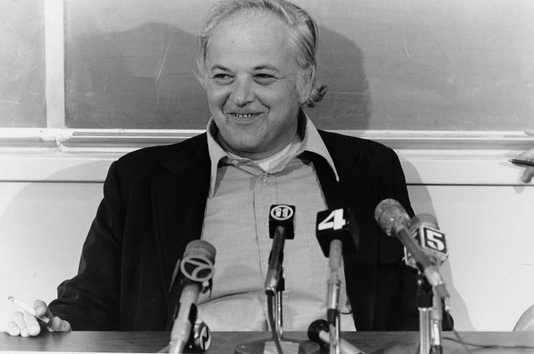
Stanford Professor Emeritus Burton Richter, winner of the 1976 Nobel Prize in physics, died Wednesday (July 18) in Palo Alto, the university announced today. He was 87.
Richter’s Nobel Prize-winning discovery of the J/psi subatomic particle, shared with MIT’s Samuel Ting, confirmed the existence of the charm quark. That discovery upended existing theories and forced a recalibration in theoretical physics that reverberated for years, Stanford said in its announcement.
One Nobel committee member at the time described it as “the greatest discovery ever in the field of elementary particles.”
“His co-discovery of a new subatomic particle changed physics forever, and his leadership of SLAC empowered many others to achieve transformative scientific discoveries,” said Stanford President Marc Tessier-Lavigne. His many honors, including the Nobel Prize and the National Medal of Science, are testament to his lasting contributions to Stanford and to our world.”
Richter was remembered as a talented physicist whose achievements laid the groundwork for many decades of discoveries.
In 1984, Richter became director of SLAC, a job he held through 1999. During that time, Richter oversaw the construction of the Stanford Linear Collider, which produced much more energetic collisions and was the only one of its kind ever built. Other machines followed, positioning SLAC to take advantage of new frontiers in photon science.
In addition to sharing the Nobel Prize, Richter received the nation’s highest scientific honor, the National Medal of Science, in 2014; the U.S. Department of Energy’s Enrico Fermi Award in 2012; and the DOE’s Ernest Orlando Lawrence Award in 1976.
Richter is survived by his wife, Laurose; daughter Elizabeth Richter of Columbia, Maryland; and son Matthew Richter, daughter-in-law Cheryl Richter and grandchildren Allison and Jennifer Richter, all of Woodside.
